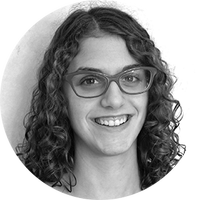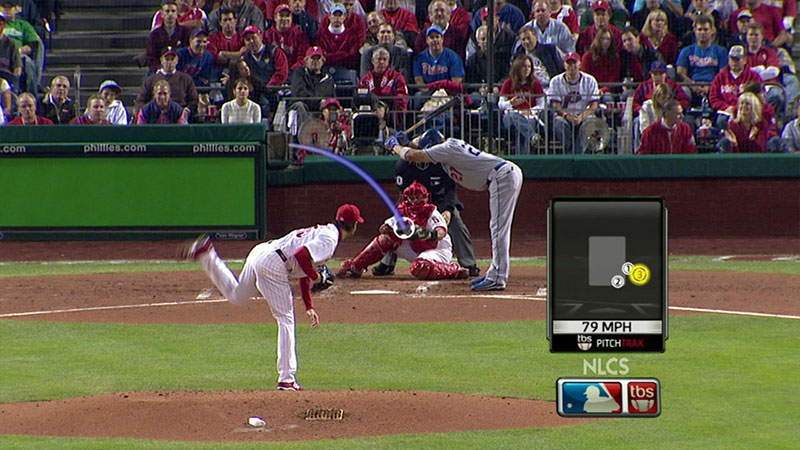How technology is making baseball better — even without robot umpires
Studious, tech-driven analysis of the strike zone is significantly improving human umpires' ability to call balls and strikes


Last summer, an independent professional baseball team let a robotic umpire call balls and strikes for a game. (Humans were still on hand to announce the results and make calls on foul balls and plays at the plate.)
As futuristic as this sounds, this very technology, called PITCHf/x, was installed in every Major League Baseball stadium several years ago, in 2007. And though robot umps have yet to call professional ball, the technology behind them is transforming the game of baseball.
PITCHf/x is a three-camera system: Two zoom in on the space between the pitcher and home plate from both the first and third baselines, and the third camera, in centerfield, determines the height of the strike zone. The cameras take snapshots every 1/60th of a second during a pitch. The result is a 3D image that tracks the ball's trajectory as it approaches home plate, honing in on whether the pitch is a strike or a ball. Starting in 2009, after each game, the home plate umpire received a disk containing all the data from that game — a chance to identify missed calls and study areas for improvement.
The Week
Escape your echo chamber. Get the facts behind the news, plus analysis from multiple perspectives.

Sign up for The Week's Free Newsletters
From our morning news briefing to a weekly Good News Newsletter, get the best of The Week delivered directly to your inbox.
From our morning news briefing to a weekly Good News Newsletter, get the best of The Week delivered directly to your inbox.

"You can determine things that aren't easily determined any other way. For example, how much did the ball move? How much did it deviate from a straight line path, and in what direction did it deviate?" said Alan Nathan, a University of Illinois at Urbana-Champaign professor emeritus of physics and early PITCHf/x consultant. "Those are questions that it's hard to answer by looking by eye. It's much better to actually have numbers. You can do all kinds of analysis that you couldn't otherwise do."
The results are fascinating. Each year, umpires have continued to improve accuracy on their calls and extend their strike zones downward in accordance with the rule book's strike zone.
"That doesn't sound huge on its face, but it's actually a really large drop in the strike zone," said Brian Mills, a University of Florida professor of managerial sports economics who has studied PITCHf/x extensively. "It's not anything we've seen in a long time."
Younger umpires fare better than older ones in conforming to the rule book strike zone, according to Mills' research. Eventually, umpires will hit the upper limit of how good they can get compared to PITCHf/x. Because while the cameras can still make the wrong call, they're accurate more often than even the most skilled humans can aspire to be.
A free daily email with the biggest news stories of the day – and the best features from TheWeek.com
"You have 100 mph pitches traveling pretty quickly through an imaginary box," Mills said. "There's always going to be a substantial amount of human error in that."
PITCHf/x technology isn't only changing the way umpires call balls and strikes. A bigger strike zone means games are lighter on offense, something fans may be erroneously attributing instead to the league cracking down on steroid usage. The MLB may ultimately decide to raise the strike zone to cater to fans who snooze during pitchers' duels. That would result in a whole new adjustment period for umpires.
In general, change doesn't come easily to baseball. Former Arizona Diamondbacks and Boston Red Sox ace Curt Schilling once punched a camera for PITCHf/x's predecessor, QuesTec. Just because PITCHf/x robots have the information they need to call MLB games doesn't mean they will in the foreseeable future. Traditionalists would miss the pitch framing, brawls, and overall imperfection human umpires allow for.
Even as new technology, like Statcast, builds on the power of PITCHf/x, Mills ventures that it'll be at least 10 years before umpires go robotic. Given that baseball is stuck with imperfect humans for the time being, we might as well learn to appreciate the skill that goes into their jobs.
"I think it's important to note that as much crap as umpires get for wanting to show off or call their own game, my experience with umpires have taught me that they're really out there, they want to get it right," said Mills, a former collegiate pitcher. "They don't want to change the game in a way that's going to put them at the center. They'd rather be unseen. There is a real interest in doing their jobs as well as they can."
Julie Kliegman is a freelance writer based in New York. Her work has appeared in BuzzFeed, Vox, Mental Floss, Paste, the Tampa Bay Times and PolitiFact. Her cats can do somersaults.
-
 Why is Trump’s alleged strike on Venezuela shrouded in so much secrecy?
Why is Trump’s alleged strike on Venezuela shrouded in so much secrecy?TODAY'S BIG QUESTION Trump’s comments have raised more questions than answers about what his administration is doing in the Southern Hemisphere
-
 Vance’s ‘next move will reveal whether the conservative movement can move past Trump’
Vance’s ‘next move will reveal whether the conservative movement can move past Trump’Instant Opinion Opinion, comment and editorials of the day
-
 Why recognizing Somaliland is so risky for Israel
Why recognizing Somaliland is so risky for IsraelTHE EXPLAINER By wading into one of North Africa’s most fraught political schisms, the Netanyahu government risks further international isolation
